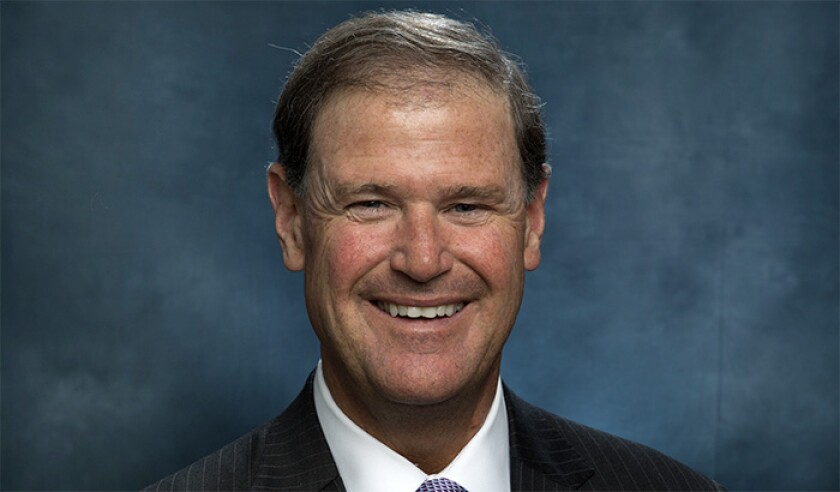
More consolidation is coming for the broking space, but M&A will be more strategic than in years past, RT Specialty chairman and CEO Tim Turner told Insurance Insider US at the annual WSIA marketplace.
In an interview, the CEO said: “I think you'll see continued M&A strategy in broking and underwriting, but much more strategic, not just buying things for volume.”
It's not enough today to be a great broker, Turner continued. “You have to be a great broker, and a great underwriter and provider of solutions integrated into the broking approach to it.
“That’s what this industry has done it has found a way to elevate the broking strategies and solutions and integrate delegated underwriting authority into the mix.”
The wholesale broking market has seen continued consolidation, this publication has reported.
Ryan Specialty announced Turner as new group CEO as part of the company’s leadership succession plan, effective October 1. In tandem, president Ed McCormack was announced as the new RT Specialty CEO.
McCormack added that the brokers that have not been acquired yet “are not [going through with a deal] because they don’t think that they can get the value that they expect.”
He noted that in some cases, these are family-run businesses where the owners want to continue running the company - or continue growing to a point where they become more attractive to a buyer.
Turner continued that valuations and multiples “have always had a wide range”, detailing multiple factors including size, efficiencies, and their Ebitda trajectory, among others.
“While the market fluctuates because of things like interest rates, those fundamental metrics are always the driver of what the multiple is in any market,” he said.
When asked about what the future for that space might look like for Ryan Specialty, Turner added that offering multi-dimensional services such as underwriting, brokering, and backroom services is key.
The CEO also noted that the binding authority market is very fragmented.
“It’s ripe to consolidate. Technology, AI and electronic trading platforms play a huge role in the ability for some of us to consolidate faster and to bring a stronger value proposition to clients,” Turner said.
High discipline
Turner stated that there is a “strong possibility” that most of the business that has been taken from the admitted market will remain in E&S.
“The reason is that the underwriting community, admitted and non-admitted, continues to be very disciplined in limit deployment,” the executive said.
“People have lost billions of dollars in bad cat years. It’s up and down, so while things can appear to be quiet with wind, wildfire can erupt.”
The surge of severe convective storms (SCS) has also played a big part in the market shift, Turner added.
“I don’t think any CEO would get aggressive in cat,” he said. “I think they’re going to continue to be disciplined and competitive.”
On casualty, Turner echoed his comments on discipline in the underwriting community, adding that loss cost adjustment factors directly tied to claim handling are accelerating faster than most CEOs believed.
“A lot of that's tied to these higher-hazard classes of business that have tremendous latency attached to them. There might be a reserve up from 10 years ago, and now it's 20 times that today with lost cost adjustment factors,” Turner said.
Turner explained that the pandemic had a further effect on loss cost trends due to the courts inability to hear cases.
“Now [the courts] are back up and you’ve got litigation finance accelerating right into the P&C market as hard as it can. It scares a lot of these markets,” Turner added.
